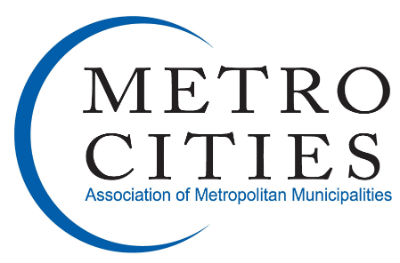In This Issue:
- Release of 2020 Generalized Land Use Inventory
- Transit Safety Study Initial Findings
- Legislative Working Group on Frontline Workers
Release of 2020 Generalized Land Use Inventory
Metropolitan Council staff presented a 2020 Generalized Land Use Inventory to the Committee of the Whole this week. The inventory, conducted every three to seven years, is produced using aerial photography, assessor information and building permit data. Once produced, it is sent to communities in the region for review.
The inventory shows land consumption increasing for the first time since 2005, with single family detached homes being a primary driver of development. The inventory shows a decrease in commercial, office, and institutional development and increases in non-residential mixed use and industrial development.
These findings also show that as the region grows, so does the footprint of parks and recreational areas. Click HERE for a look at the region’s green space, including past trends, variation in green space across land uses, and the intersection of green space and equity.
Finally, land consumption data shows roughly half as many acres were used in 2010-2020 to develop for new residents and households when compared to the previous decade. This suggests that through more compact development practices, the region is demanding less land to accommodate the same number of people and households. Click HERE to view the entire presentation.
Transit Safety Study Initial Findings
Project partners from the Citizens League and Twin Cities Innovation Alliance presented their initial findings from a public engagement effort on Metro Transit safety. The project kicked off in January of 2021. Since then, team members have conducted a survey and several virtual community forums.
Questions asked of forum attendees include:
- How do you define safety on transit?
- Do you feel safe on Metro Transit? Why or why not?
- How is your sense of safety disrupted?
- What experiences have made you feel unsafe?
Discussions at the forums and questions asked in the survey touched on a variety of topics including behavior of other passengers, police on transit vehicles, cleanliness of transit facilities, timeliness of service, and the impact of safety concerns on one’s decision to use transit. There was a particular effort to reach young people, who told researchers they feel especially targeted and surveilled on transit.
Transit employees were also asked to provide suggestions to improve safety. Some suggestions included a more prominent police or security presence on vehicles and opportunities for better coordination among agencies and local governments.
A final report is expected in September. Click HERE to view the presentation which includes detailed responses from participants as well as demographic data and other information.
Legislative Working Group on Frontline Workers
A Frontline Worker Pay Working Group, established by the Legislature and tasked with allocating $250 million in direct payments for essential workers, met twice this week. A challenging aspect of the group’s charge is determining which industries and occupations will qualify for the payment. If they establish too narrow a scope, they run the risk of leaving out workers who showed up to work during the pandemic. If they cast too wide a net, payments may fail to mean much to recipients.
Cameron Macht from the Minnesota Department of Employment and Economic Development (DEED) presented a few scenarios for the group to consider. Each takes a different approach in defining “frontline workers” and for each the approximate number of employees is used to estimate the value of a flat-rate payment per employee. As an example, if the legislature used the CISA Critical Infrastructure Sectors list DEED estimates it would include around 2.36 million jobs and payments would come out to just over $106 per worker. Other approaches use categories identified in the Minnesota Department of Health’s vaccine rollout and those found in HF 41 – Frazier from this past legislative session.
Many questions remain, most of which revolve around the specificity of available data. According to DEED, the data they have does not distinguish between occupations, only industries. As such, hospital workers would include nurses and doctors, but also accountants and other administrative employees working for the hospital. Furthermore, available data does not tell lawmakers whether a worker was able to work from home. No clear lines have been drawn and it remains to be seen which municipal employees (if any) may be eligible for payments.
Contact Mike Lund at [email protected] or 651-215-4003 with any questions.
